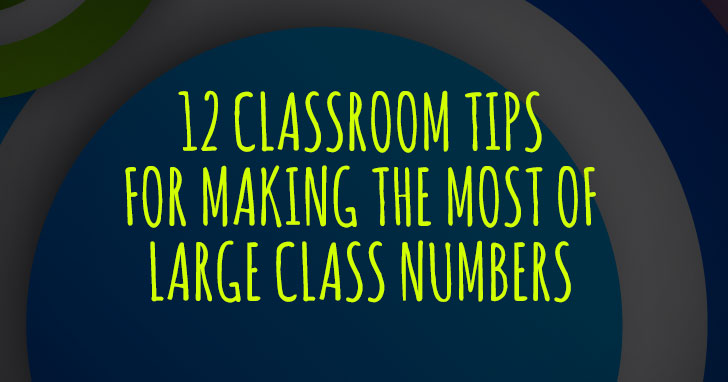In the Mix: 10 Tips for Having a Great Mixed Level Class


Whether it’s because your school is large or there are just a particularly high number of students at the level you teach, you will at times find yourself teaching larger classes. And with that larger class come unique struggles. Here are some typical challenges that teachers of large classes are likely to encounter as well as strategies for making things work.
If you are having trouble remembering your students’ names or there are just so many to learn in so little time, try these ideas.
You can have students wear name tags during class. The easiest method is to use name tag stickers and have students complete one each day at the beginning of class. Though they will tire of this over time, they will likely complete the name tags long enough for you to learn their names and for them to learn each other’s names as well.
You can also make permanent name tags by writing their name in Roman script as well as their native script on a piece of construction paper. Then laminate their name and hanging it from a long piece of string to make a necklace. Students will probably be happy to wear these nametags in class.
You can also try purchasing plastic sleeves already on lanyards and simply print out name cards for your students. They will probably wear these name tags longer than they will make stick on tags, and you will have plenty of opportunity to learn their names. Then recycle the lanyards for your class next semester.
Having more students in your classroom means you have less room available for movement or special set ups in class. You might also have students that cannot see clearly what is happening in the front of the room.
The easiest solution is to write larger than you normally would on the front board. Also make sure you are sticking to the top half of your board since the lower you go the harder it is for students in the back to see.
You might also consider photocopying any material onto an overhead and using a projector, or copy your materials into a power point presentation and use a projector linked to your computer. If your school has this equipment available it’s just a matter of a little prep time to get things in place. If your school doesn’t have the equipment, it can mean a big financial investment that you may or may not want to make.
Another strategy for helping students see what is going on is to arrange desks in a nontraditional form. I love to put my students in columns starting at the center of the classroom and moving toward the wall, like the spokes on a wheel, and leaving a large circular space from which to teach in the middle of the room. You can also move four desks together to make larger tables or arrange desks in long rows to resemble a banquet table. Just make sure you move throughout the classroom when you teach so all your students can see you up close for at least part of the lesson. Even better, use the projector and a remote with a power point presentation as you teach from different areas of the room and you’ll have the best of both worlds.
When you have more students but the same amount of time, you will find you can spend less time with individual students that you would be able to with a small class. Your students probably appreciate their interaction with you since you are the only native speaker in class and because they value your feedback on their language use, and they will want as much individualized attention from you as they can get.
Group work will help you to be able to interact with your students more. Keep your group numbers to five and under, and then during each activity, sit with one group and interact with them as they complete the assigned task.
As you do, make notes on sticky notes for individuals in that group on their language use. Though you may not have time to talk with each student about his or her performance in class, you can put a sticky note on their desk at the end of the day so they can get your feedback first thing in the morning. Students who get these notes will still feel like they have connected with you personally.
Learning centers are also a great way to have individual time with students without taking away from the entire class. You can set up stations around your room that work on different skills in the English language and then sit with students as they work or call individuals up to your desk for one on one conversation practice as other students work.
One challenging aspect of larger classes is you will see more diversity in how quickly students learn what you are teaching. Some students will be proficient in a short amount of time while others are merely competent and others are still struggling with the basics of the concepts.
Though it requires somewhat more work on your part, you can have advanced activities ready for every topic you teach. These activities should be independent activities that students can do without your help or interaction, though students should be allowed to do the activities together. That way you can set the students who have understood and applied the concepts you are teaching to those advanced activities while you continue to work with the groups that are not as proficient.
You might also consider dividing your class into levels within it itself. Instead of labeling those levels high and low, call them the red and blue groups or the fish and the sharks. Then work with each group separately while the other group does activities or exercise based on what you just taught them.
Group work is also another strategy to use when your students are at different skill levels. Sometimes, group your students by ability level so more advanced students challenge each other within their group. At other times, pair higher -skilled students with those of lower skills. The more advanced students will benefit from teaching their partners, and the struggling students will be motivated to match their skills to that of their partners.